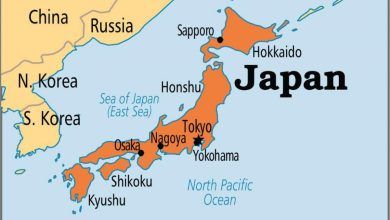
The European Central Bank has lowered interest rates for the sixth consecutive time, bringing its deposit rate to 2.25% in a bid to shield the eurozone economy from mounting global trade tensions and a deteriorating growth outlook. While recent data pointed to moderating inflation across the 20-member bloc, policymakers are growing increasingly concerned about the broader economic impact of the United States’ shifting tariff stance under President Donald Trump.
The ECB’s decision, announced Thursday, reflects the growing anxiety in Frankfurt and across Europe over the potential fallout of Washington’s erratic trade policy. In recent weeks, the Trump administration has announced a flurry of tariffs, including sweeping duties on steel, aluminum, and automobiles, only to partially pause implementation for several countries including those within the European Union. The temporary relief, lasting 90 days, has done little to ease uncertainty, as new investigations into chip technology and pharmaceutical imports suggest more targeted tariffs could follow.
While inflation across the eurozone has edged down toward the ECB’s 2% target sitting at 2.2% in March the broader economic picture has become more precarious. The central bank, which had appeared poised to pause its rate cuts following its March meeting, was pushed back into action amid the growing unpredictability of global trade flows and investor sentiment. Analysts note that the decision was widely anticipated, as the ECB attempts to maintain a delicate balance between inflation control and growth support.
Policymakers now face what they describe as “exceptional uncertainty” a climate that is dampening consumer and business confidence across the continent. Tighter financing conditions, driven in part by jittery financial markets reacting to U.S. trade moves, have raised the stakes for the ECB. In this context, Thursday’s cut was seen as a clear effort to counterbalance rising stress in the private sector, especially as smaller firms and households face potential price increases on imported goods and higher borrowing costs.
The US trade measures have emerged as a significant threat to transatlantic commerce, with the potential to hit European exporters particularly hard. Trump’s so-called “Liberation Day” tariffs, introduced at the start of April, initially sent shockwaves through global markets. And while the EU secured a temporary reprieve, the longer-term impact on investor and business confidence remains.
Complicating matters further, the ECB’s rate cut arrives at a time when Germany the eurozone’s largest economy has announced expansive stimulus plans under its new government. However, the economic impact of this spending, which includes substantial investments in defense and infrastructure, is not expected to materialize until at least 2026. Meanwhile, the destabilizing effects of higher tariffs are likely to be felt almost immediately, prompting analysts to warn that the potential drag on eurozone growth may outweigh any near-term benefits from planned German fiscal expansion.
Currency movements may offer a partial offset. The euro has gained ground against the dollar, which could make imports more affordable and cushion inflationary pressure. Additionally, US tariffs on Chinese goods may lead to a redirection of cheaper goods toward Europe, further easing price levels. Still, with economic momentum slowing, the ECB is expected to proceed cautiously in the months ahead.
Market watchers and policymakers alike are now paying close attention to signals from ECB President Christine Lagarde, who has emphasized the institution’s readiness to act decisively if risks to financial stability escalate. Though inflation appears largely under control for now, the central bank’s leadership has made clear that it remains committed to using all available tools to safeguard the eurozone’s fragile recovery in the face of global uncertainty.
As the ECB adopts a data-driven, meeting-by-meeting approach, its challenge remains navigating a volatile external landscape while maintaining internal cohesion and credibility. With the next phases of US trade policy still unclear, the path ahead for European monetary policy will demand both flexibility and resolve.





